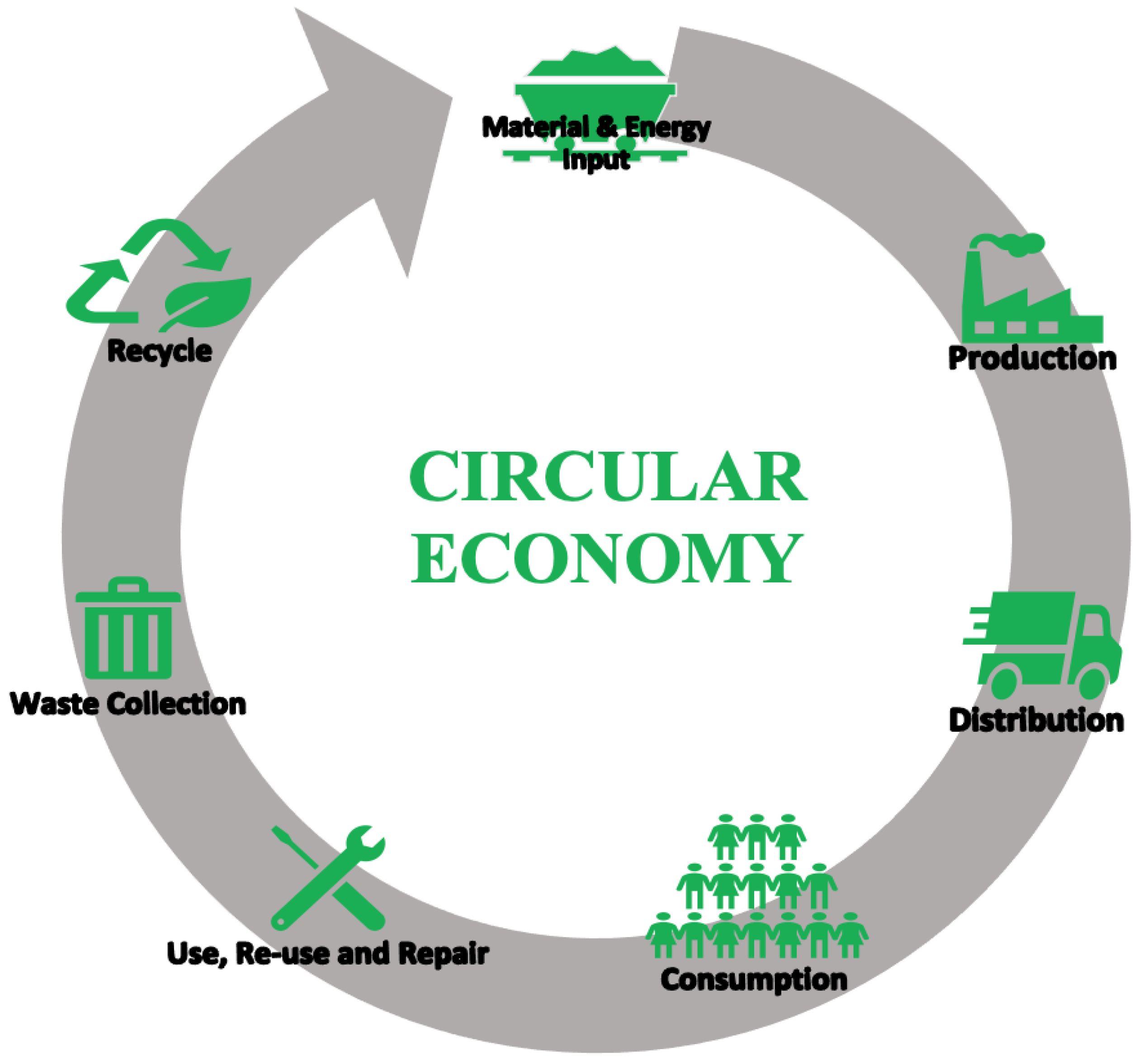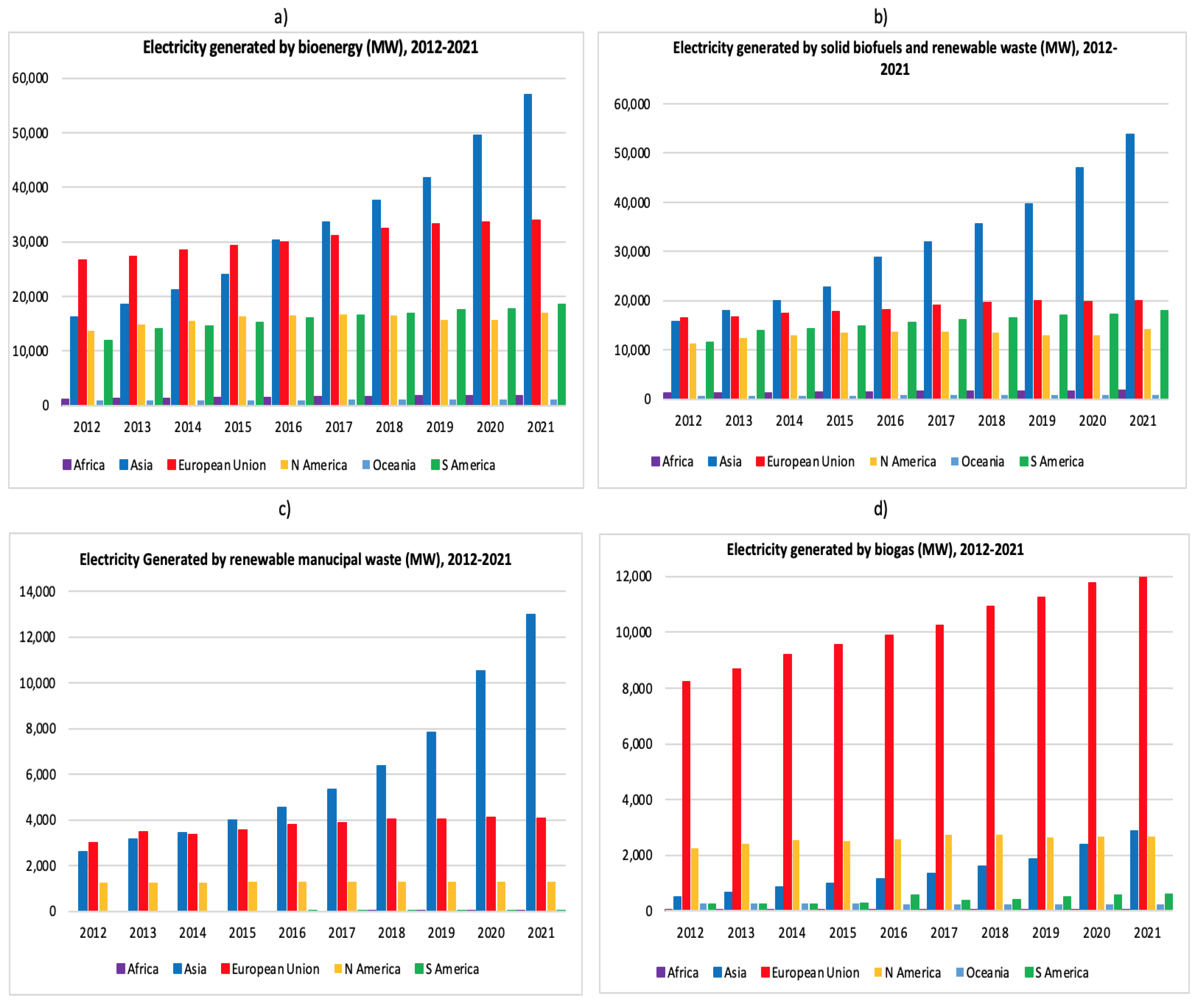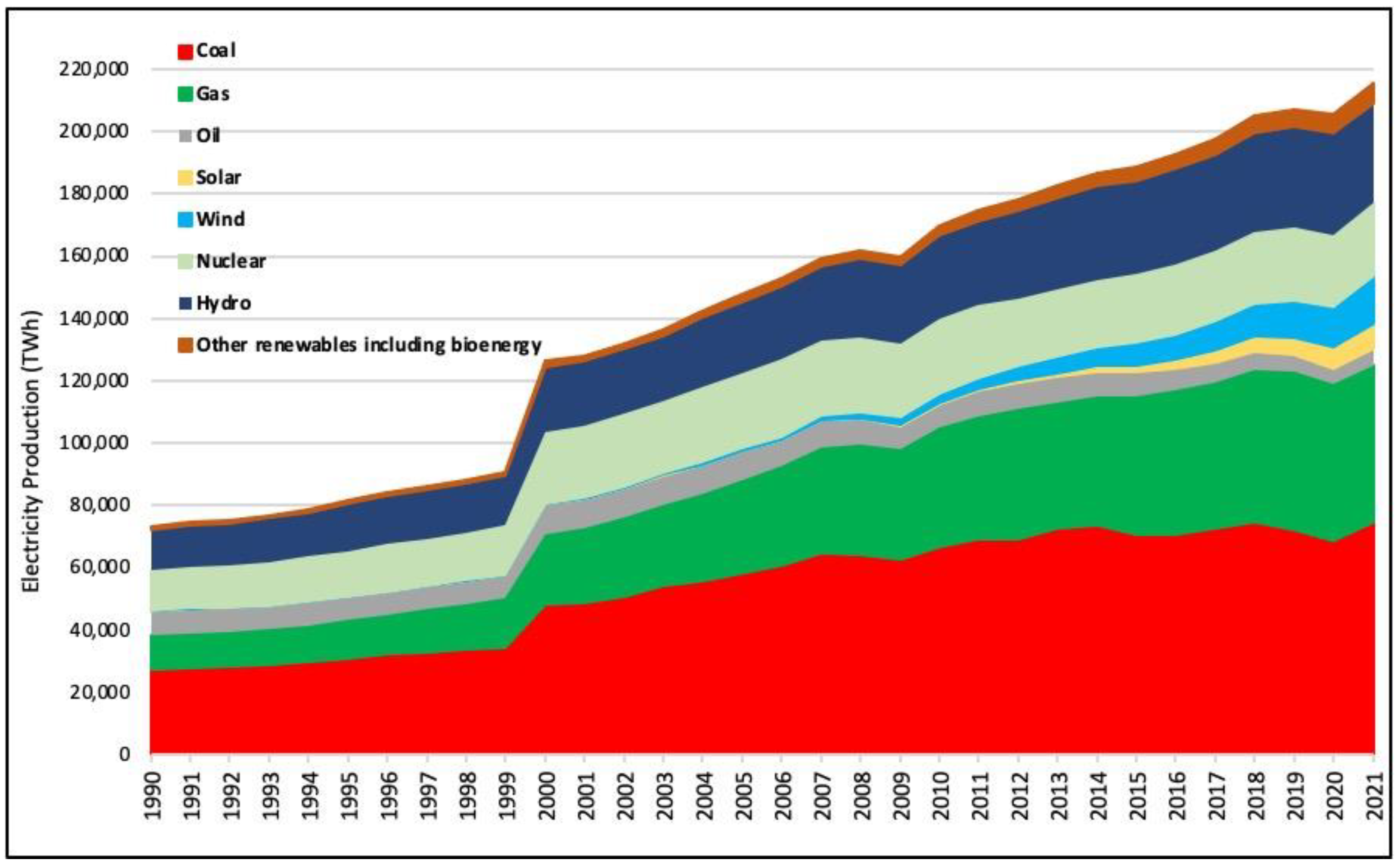
| Version | Summary | Created by | Modification | Content Size | Created at | Operation |
|---|---|---|---|---|---|---|
| 1 | Arezoo Ghazanfari | -- | 2066 | 2023-02-20 11:19:43 | | | |
| 2 | Rita Xu | -5 word(s) | 2061 | 2023-02-21 02:40:45 | | |
Video Upload Options
Sustainability is a strategic approach to develop a more sustainable economy to support the environment and socio-economic development. Literature on sustainability has been concerned mainly with global warming and environmental degradation issues, whereas the Circular Economy (CE) concept has recently been suggested as an alternative solution to support market sustainability and deal with both environmental and socio-economic challenges. In order to tackle these challenges, countries must switch from linear economies that follow the “take-make-dispose” principle to circular and sustainable economies. This research applies a structural and conceptual literature review to elucidate the most decisive determinants in the formation of circular strategies, particularly in the context of the energy sector. This research examines obstacles that hinder CE adoption and formulates drivers and measures to overcome them. The research shows that the circular approach is critical in achieving sustainable development. Circularity can be considered a novel and innovative approach to alleviating the contradiction between rapid economic growth and energy and raw materials shortages. The CE structure must be considered as a sustainable foundation to enhance economic growth by avoiding waste, preserving natural capital, managing resource scarcity, recycling materials, maximizing energy efficiency, and recirculating them into the economy. Analysis reveals that the circular system is a key pillar of sustainability, security, and efficiency in the energy sector. The sustainable energy transition requires incorporating the CE principles in the design process. It also revealed that both public and private sectors must move away from the linear paradigm towards circularity to achieve CE implementation.
1. Introduction
2. Conceptual Analysis of Circular Economy
2.1. Global Review of Circular Economy

2.2. Waste to Energy
-
Recovering energy from waste can be significantly beneficial in facilitating energy transition and reaching zero-carbon decarbonization targets;
-
WtE methods are instrumental to enhance energy security, reduce reliance on fossil fuels, and generate clean and reliable sources of thermal energy, electricity, and fuels;
-
Implementing a sustainable framework with no contradiction with existing decarbonization measures;
-
One of the most effective approaches to enhance the efficiency of power generation and energy consumption through waste incineration operations;
-
Recovery of secondary raw materials from incineration residues;
-
Delivering a hygienic service to society through municipal waste management and the treatment of combustible non-recyclable waste.


References
- Cherp, A.; Jewell, J.; Vinichenko, V.; Bauer, N.; De Cian, E. Global energy security under different climate policies, GDP growth rates and fossil resource availabilities. Clim. Chang. 2013, 136, 83–94.
- Wang, Q.; Zhou, K. A framework for evaluating global national energy security. Appl. Energy 2017, 188, 19–31.
- Qin, L.; Wang, M.; Zhu, J.; Wei, Y.; Zhou, X.; He, Z. Towards Circular Economy through Waste to Biomass Energy in Madagascar. Complexity 2021, 2021, 5822568.
- Steffen, W.; Richardson, K.; Rockström, J.; Cornell, S.E.; Fetzer, I.; Bennett, E.M.; Biggs, R.; Carpenter, S.R.; De Vries, W.; De Wit, C.A.; et al. Planetary boundaries: Guiding human development on a changing planet. Science 2015, 347, 1259855.
- Franklin-Johnson, E.; Figge, F.; Canning, L. Resource duration as a managerial indicator for Circular Economy performance. J. Clean. Prod. 2016, 133, 589–598.
- Govindan, K.; Hasanagic, M. A systematic review on drivers, barriers, and practices towards circular economy: A supply chain perspective. Int. J. Prod. Res. 2017, 56, 278–311.
- Bet, B.; Kas, J.; Truijens, D.; Lee, S.V.D.; Broere, J.; Leising, E.; Nuninga, T.; Bose, P.; Ravensberg, E.V.; Francesco, E.D.; et al. Barriers and Best Practices for the Circular Economy. 2018. Available online: https://core.ac.uk/download/pdf/154412546.pdf (accessed on 30 December 2018).
- World Nuclear Association. Carbon Dioxide Emissions from Electricity. 2022. Available online: https://www.world-nuclear.org/ (accessed on 20 September 2020).
- IEA Online Data Services. Global Energy Review: CO2 Emissions in 2021. Available online: https://www.iea.org/reports/global-energy-review-co2-emissions-in-2021-2 (accessed on 28 July 2022).
- European Environmental Agency. Emerging Waste Streams: Opportunities and Challenges of the Clean-Energy Transition from a Circular Economy Perspective. 2021. Available online: https://www.eea.europa.eu/publications/emerging-waste-streams-opportunities-and (accessed on 24 August 2021).
- MacArthur, E. Founding Partners of the towards the Circular Economy Economic and Business Rationale for an Accelerated Transition. 2012. Available online: https://www.aquafil.com/assets/uploads/ellen-macarthur-foundation.pdf (accessed on 30 September 2012).
- Jawahir, I.; Bradley, R. Technological Elements of Circular Economy and the Principles of 6R-Based Closed-loop Material Flow in Sustainable Manufacturing. Procedia CIRP 2016, 40, 103–108.
- Ghisellini, P.; Cialani, C.; Ulgiati, S. A Review on Circular Economy: The Expected Transition to a Balanced Interplay of Environmental and Economic Systems. J. Clean. Prod. 2016, 114, 11–32.
- Ozili, P.K. Circular Economy, Banks, and Other Financial Institutions: What’s in It for Them? Circ. Econ. Sustain. 2021, 1, 787–798.
- Barros, M.V.; Salvador, R.; Prado, G.F.D.; de Francisco, A.C.; Piekarski, C.M. Circular economy as a driver to sustainable businesses. Clean. Environ. Syst. 2020, 2, 100006.
- Unleashing the Power of the Bio-Economy. Ind. Biotechnol. 2013, 9, 74–80.
- Boulding, K.E. The Economics of the Coming Spaceship Earth; Resources for the Future: Washington DC, USA, 1966; pp. 1–17.
- Segerson, K.; Pearce, D.W.; Turner, R.K. Economics of Natural Resources and the Environment. Land Econ. 1989, 67, 272.
- Grafström, J.; Aasma, S. Breaking circular economy barriers. J. Clean. Prod. 2021, 292, 126002.
- Andersen, M.S. An introductory note on the environmental economics of the circular economy. Sustain. Sci. 2006, 2, 133–140.
- Su, B.; Heshmati, A.; Geng, Y.; Yu, X. A review of the circular economy in China: Moving from rhetoric to implementation. J. Clean. Prod. 2013, 42, 215–227.
- Geissdoerfer, M.; Savaget, P.; Bocken, N.M.P.; Hultink, E.J. The circular economy—A new sustainability paradigm? J. Clean. Prod. 2017, 143, 757–768.
- Stahel, W.; Reday, G. The Potential for Substituting Manpower for Energy, Report to the Commission of the European Communities. 1976. Available online: https://www.econbiz.de/Record/the-potential-for-substituting-manpower-for-energy-final-report-30-july-1977-for-the-commission-of-the-european-communities-reday-mulvey-genevi%C3%A8ve/10000552301 (accessed on 30 July 1977).
- Christis, M.; Athanassiadis, A.; Vercalsteren, A. Implementation at a city level of circular economy strategies and climate change mitigation–The case of Brussels. J. Clean. Prod. 2019, 218, 511–520.
- Sassanelli, C.; Rosa, P.; Rocca, R.; Terzi, S. Circular economy performance assessment methods: A systematic literature review. J. Clean. Prod. 2019, 229, 440–453.
- Kristensen, H.S.; Mosgaard, M.A. A review of micro level indicators for a circular economy–Moving away from the three dimensions of sustainability? J. Clean. Prod. 2020, 243, 118531.
- De Pascale, A.; Arbolino, R.; Szopik-Depczyńska, K.; Limosani, M.; Ioppolo, G. A systematic review for measuring circular economy: The 61 indicators. J. Clean. Prod. 2021, 281, 124942.
- Mhatre, P.; Panchal, R.; Singh, A.; Bibyan, S. A systematic literature review on the circular economy initiatives in the European Union. Sustain. Prod. Consum. 2021, 26, 187–202.
- Cayzer, S.; Griffiths, P.; Beghetto, V. Design of indicators for measuring product performance in the circular economy. Int. J. Sustain. Eng. 2017, 10, 289–298.
- Jackson, M.; Lederwasch, A.; Giurco, D. Transitions in Theory and Practice: Managing Metals in the Circular Economy. Resources 2014, 3, 516–543.
- Wilts, H. The Circular Economy; Kick-Starting the Transformation, The Friedrich Ebert Stiftung, Economic and Social policies. 2019. Available online: https://library.fes.de/pdf-files/wiso/19034.pdf (accessed on 28 February 2019).
- METI. Handbook on Resource Recycling Legislation and 3R Initiatives; Ministry of Economy, Trade and Industry: Tokyo, Japan, 2004.
- Morioka, T.; Tsunemi, K.; Yamamoto, Y.; Yabar, H.; Yoshida, N. Eco-efficiency of Advanced Loop-closing Systems for Vehicles and Household Appliances in Hyogo Eco-town. J. Ind. Ecol. 2005, 9, 205–221.
- Lieder, M.; Rashid, A. Towards circular economy implementation: A comprehensive review in context of manufacturing industry. J. Clean. Prod. 2016, 115, 36–51.
- Makarichi, L.; Jutidamrongphan, W.; Techato, K.-A. The evolution of waste-to-energy incineration: A review. Renew. Sustain. Energy Rev. 2018, 91, 812–821.
- Khalil, M.; Berawi, M.A.; Heryanto, R.; Rizalie, A. Waste to energy technology: The potential of sustainable biogas production from animal waste in Indonesia. Renew. Sustain. Energy Rev. 2019, 105, 323–331.
- Themelis, N.J. An Overview of the Global Waste-to-Energy Industry. Waste Management World. 2003, pp. 40–48. Available online: https://waste-management-world.com/artikel/an-overview-of-the-global-waste-to-energy-industry/ (accessed on 30 July 2003).
- Kothari, R.; Tyagi, V.; Pathak, A. Waste-to-energy: A way from renewable energy sources to sustainable development. Renew. Sustain. Energy Rev. 2010, 14, 3164–3170.
- Khan, I.; Kabir, Z. Waste-to-energy generation technologies and the developing economies: A multi-criteria analysis for sustainability assessment. Renew. Energy 2019, 150, 320–333.
- Kalyani, K.A.; Pandey, K.K. Waste to energy status in India: A short review. Renew. Sustain. Energy Rev. 2014, 31, 113–120.
- International Renewable Energy Agency (IRENA). Renewable Capacity Statistics. 2022. Available online: https://www.irena.org/publications/2022/Apr/Renewable-Capacity-Statistics-2022 (accessed on 4 February 2023).




